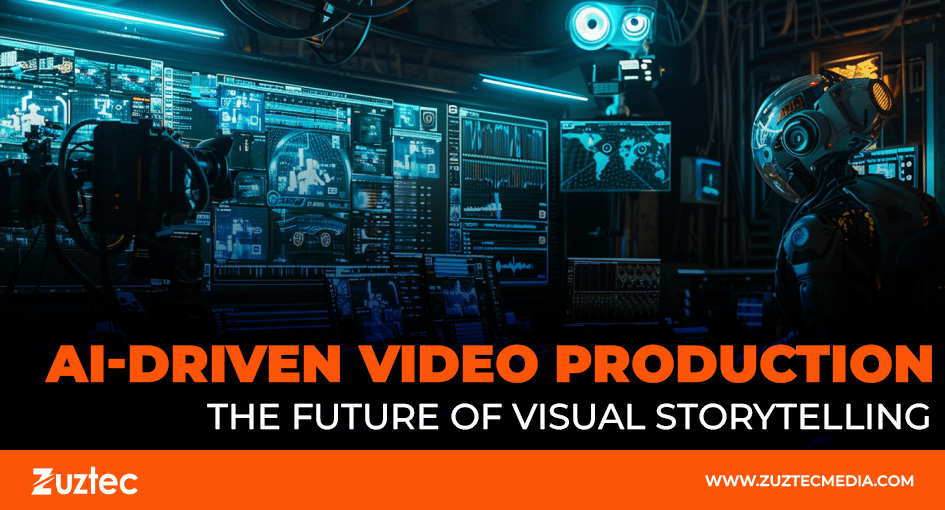
AI-Driven Video Production: The Future of Visual Storytelling
The world of video creation is undergoing a rapid transformation, and at the heart of this revolution is AI-driven video production. What once required entire crews, expensive equipment, and weeks of editing can now be done faster, cheaper, and smarter—with the help of artificial intelligence. From scriptwriting to post-production, AI tools are reshaping how brands, content creators, educators, and marketers bring stories to life.
This shift is not just about speed or automation. It’s about enabling creativity at scale. AI-driven tools are removing technical barriers, helping small businesses compete with major studios, and giving rise to a new generation of video storytellers. In a digital-first era where attention spans are short, the ability to quickly produce high-quality, engaging videos isn’t just a nice-to-have—it’s essential.
What Is AI-Driven Video Production?
Redefining the Video Creation Process
At its core, AI video production involves using artificial intelligence to assist or automate parts of the video-making workflow. This could include AI script generation, text-to-video tools, facial animation, scene transitions, automatic subtitles, or voiceovers powered by natural language processing (NLP). AI can even analyze large data sets to recommend the most engaging content structure, length, and visuals based on your audience’s behavior.
Whether it’s a short social media reel or a corporate explainer video, AI helps streamline tasks that traditionally required human intervention. By taking over repetitive or technical components, AI allows human creators to focus on high-level creativity and storytelling.
Popular Use Cases Across Industries
From digital marketing to e-learning and even healthcare, industries are leveraging AI to enhance their video strategies. For instance, e-commerce brands use AI-generated product demos, SaaS companies develop tutorial videos automatically, and news outlets convert articles into dynamic video summaries. AI-powered personalization tools also allow businesses to tailor video content for specific viewer segments, increasing relevance and engagement.
The applications of AI-driven video production continue to expand, as more platforms integrate smart features to optimize both content creation and distribution.
Real-World Examples of AI Video Tools
Text-to-Video Platforms
Text-to-video tools like Lumen5 and InVideo allow creators to paste text or a link to a blog article, then automatically generate video drafts complete with stock footage, animations, and background music. The user can then tweak the visuals or voiceovers to match their brand’s tone.
AI Avatars and Voiceovers
Tools like Synthesia and HeyGen use AI-generated avatars and synthetic voices to produce videos where virtual presenters read scripts in multiple languages. This is particularly useful for training videos, onboarding guides, or multinational content strategies, eliminating the need for hiring multilingual teams.
Automated Video Editing
Editing tools like Magisto and Wisecut use AI to cut long videos into highlights, add captions, and remove filler words. This makes it easy for content creators to edit vlogs, webinars, or interviews without advanced editing knowledge.
Challenges and Limitations
Lack of Human Emotion
While AI tools are evolving rapidly, there’s still a noticeable gap in emotional nuance and storytelling depth. An AI might write a decent script or choose fitting visuals, but it can’t always grasp the subtlety of humor, irony, or cultural references. Human oversight remains essential, especially for content that seeks to forge a deep emotional connection.
Ethical and Legal Considerations
Using AI-generated faces or voices raises questions about copyright, consent, and authenticity. For example, how should businesses disclose when their spokesperson is an AI avatar? Or what happens if AI reuses copyrighted media by accident? These are complex issues that creators must consider as AI takes a more central role in production.
Future Trends in AI-Driven Video Production
Hyper-Personalization at Scale
AI isn’t just changing how videos are made—it’s also transforming how they’re delivered. Emerging platforms use AI to analyze viewer data in real-time, then adjust scenes, pacing, or messages based on viewer interests or behavior. Imagine receiving a product ad that uses your name, location, and preferences—crafted automatically by an algorithm. That’s the promise of hyper-personalized video marketing.
Integration with the Metaverse and AR/VR
As virtual environments become more mainstream, AI-generated video content will integrate with immersive experiences like AR (augmented reality) and VR (virtual reality). Brands will be able to produce 3D explainer videos, virtual showrooms, and holographic trainers—all powered by AI tools that adapt and evolve with user interaction.
Who Benefits Most from AI-Driven Video Production?
Startups, educators, marketers, solopreneurs, and even nonprofits stand to benefit immensely from AI video tools. These platforms allow small teams to punch above their weight in content marketing and brand storytelling. In a digital world where video dominates user engagement, AI offers a way to keep pace with the demands of constant, quality content creation.
Agencies and enterprise organizations also benefit by increasing their output while cutting operational costs. By implementing AI at scale, they can respond more quickly to market trends and continuously deliver fresh, relevant content to their audiences.
In a nutshell, the rise of AI-driven video production marks a turning point in how we create and consume video content. It’s not about replacing human creativity, but enhancing it—offering tools that support faster execution, lower costs, and broader accessibility. As algorithms get smarter and more intuitive, the opportunities for creators and brands alike will only continue to expand.
That said, the most impactful videos still come from a place of authenticity and connection. AI can assist with the “how,” but the “why” still belongs to the human mind. As technology advances, those who blend emotional intelligence with AI efficiency will lead the next generation of visual storytelling. Whether you’re a marketer, educator, or content creator, understanding the capabilities and limits of AI will be essential in navigating the future of video.

